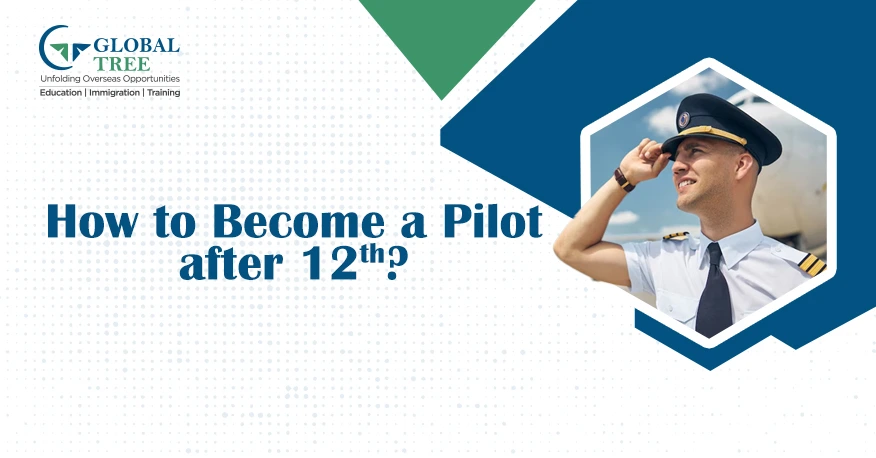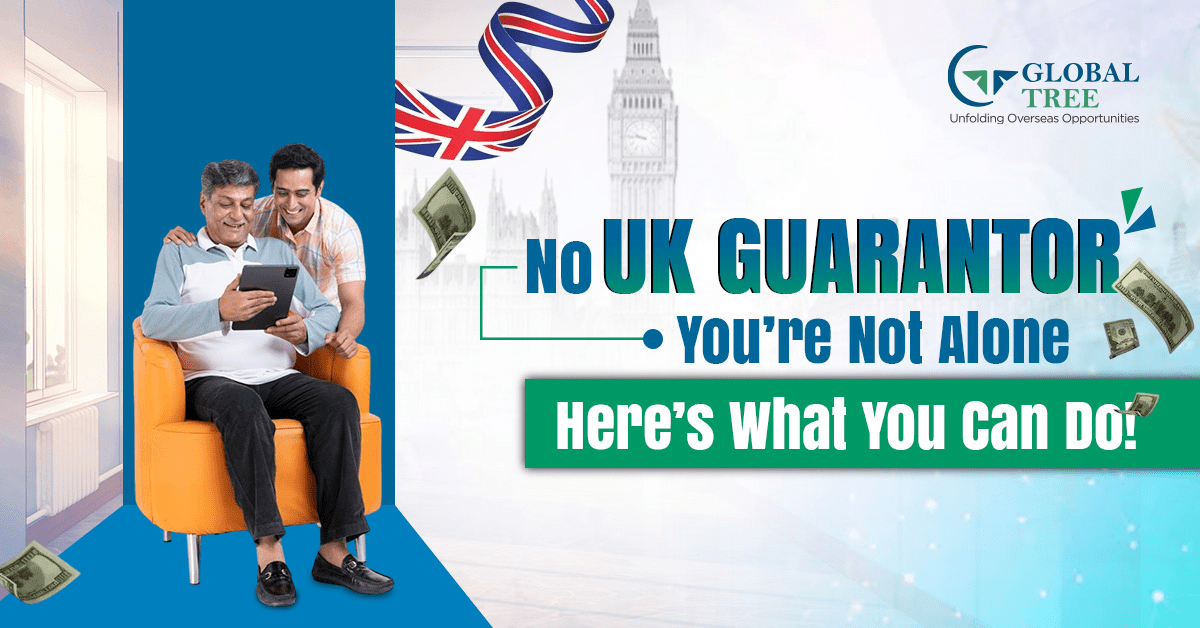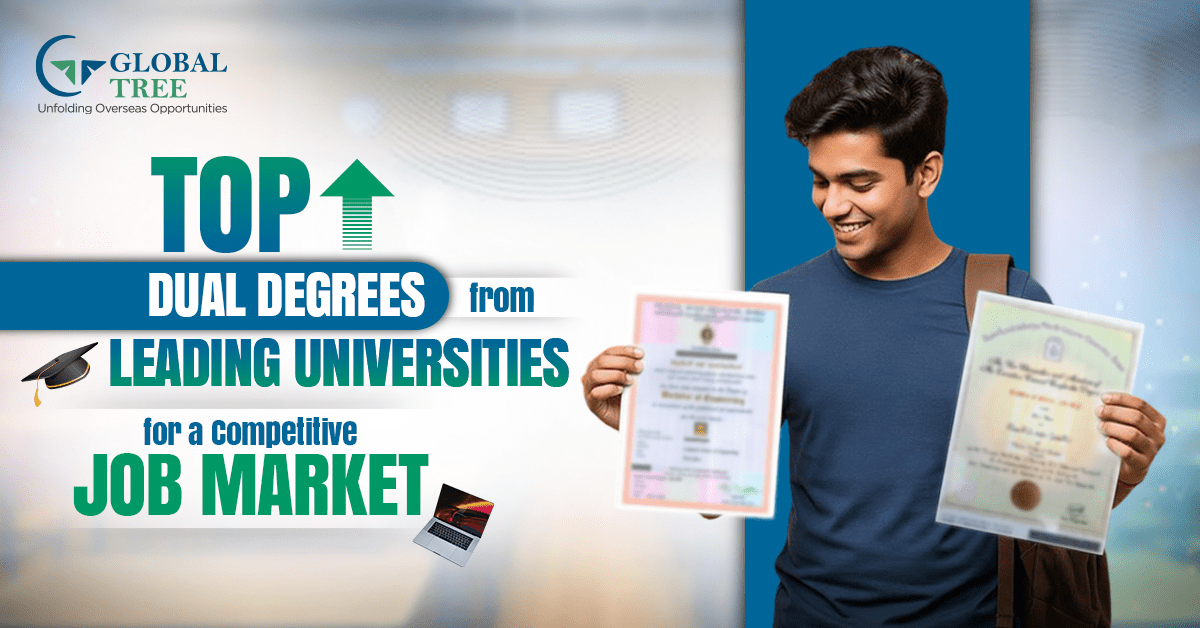How to Become a Pilot after 12th: Courses, Eligibility & More

- Introduction
- Understanding the Basics of a Pilots Career
- Role and Responsibilities of Pilot
- What are the Educational Requirements to become a pilot?
- Choosing the Right Flight School
- Obtaining a Student Pilot License (SPL)
- Acquiring a Private Pilot License (PPL)
- Advancing to a Commercial Pilot License (CPL)
- Specialized Training and Ratings
- Building Experience and Hours
- Continuous Learning and Upgrading Skills
- Conclusion
Introduction
Embarking on a career as a pilot is an exhilarating and ambitious goal. If you're fresh out of 12th grade and dreaming of the skies, here's a step-by-step guide to help you navigate the path to becoming a pilot.
Understanding the Basics of a Pilots Career
Before diving into the details, it’s crucial to understand what a career in aviation entails. Pilots enjoy a dynamic profession filled with adventure, responsibility, and continuous learning.
It's essential to be aware of the commitment, both in terms of time and finances that this career demands.
Role and Responsibilities of Pilot
Pilots are responsible for safely flying aircraft, which includes planning flights, navigating routes, and managing any in-flight changes or emergencies.
They must conduct pre-flight inspections, ensure compliance with aviation regulations, and communicate effectively with air traffic control.
a. Training and Education: Becoming a pilot requires extensive training, typically starting with a Private Pilot License (PPL) and progressing to a Commercial Pilot License (CPL).
Airline pilot is one of the most demanding jobs in the USA. Advanced training for specific types of aircraft or airline transport pilot certification may be necessary for certain career paths.
- Skills and Attributes: Essential skills include strong analytical abilities, problem-solving, excellent hand-eye coordination, and the ability to remain calm under pressure.
Good communication and teamwork skills are crucial, as pilots work closely with co-pilots, cabin crew, and ground staff.
- Career Pathways: Pilots can work in various sectors, including commercial airlines, cargo transport, private charter, or for government agencies.
Career progression often involves accumulating flight hours, additional certifications, and experience in different aircraft types.
- Lifestyle and Challenges: The pilot profession involves irregular hours, time away from home, and the need to adapt to different time zones and weather conditions.
Maintaining physical and mental health is crucial due to the demanding nature of the job.
- Regulatory Requirements: Pilots must adhere to strict regulatory standards, including regular medical examinations and continuous training to maintain their licenses.
Understanding these basics provides a foundational view of a pilot's career, highlighting the commitment, skills, and adaptability required in this challenging yet rewarding field.
(Read More: Top Non-Medical courses for a successful career abroad)
What are the Educational Requirements to become a pilot?
The journey begins right after completing your 12th grade, preferably with a background in science, focusing on Physics and Mathematics.
These subjects are foundational in aviation and will aid in your understanding of flight mechanics and navigation.
Choosing the Right Flight School
Selecting a reputable flight school is a critical step. Look for schools with comprehensive programs, experienced instructors, and good safety records.
Accreditation by relevant aviation authorities is a must.
| Factors | Description |
|---|---|
|
Accreditation |
Ensure the school is accredited by relevant aviation authorities. |
|
Curriculum |
Look for a comprehensive curriculum that covers all necessary theoretical and practical aspects. |
|
Flight Instructors |
Check the qualifications and experience of the flight instructors. |
|
Aircraft Fleet |
Assess the quality, variety, and maintenance of the aircraft used for training. |
|
Location |
Consider the school's location and its accessibility, as well as the training environment (e.g., weather conditions). |
|
Cost |
Evaluate the total cost, including tuition, flight hours, and other associated fees. |
|
Training Schedule |
Consider the flexibility of the training schedule and how it fits with your availability. |
|
Alumni Network |
Look into the school’s alumni network, success rate, and career placement services. |
|
Safety Record |
Research the school's safety record and safety protocols in place. |
|
Facilities |
Check the quality of the training facilities, including classrooms, simulators, and maintenance hangars. |
(Read More: What is the cost to study an Astrophysics course abroad?)
Obtaining a Student Pilot License (SPL)
To start your training, you'll first need to obtain a Student Pilot License (SPL).
This requires passing a physical examination to ensure you meet the health standards for pilots and a written examination testing your basic understanding of aviation.
Obtaining a Student Pilot License (SPL) is a critical first step for anyone aspiring to become a pilot. Here's an overview of the process:
a. Eligibility Requirements:
- Age: Generally, you must be at least 16 years old.
- Education: While specific educational requirements can vary, a basic understanding of English, mathematics, and physics is often necessary.
- Medical Fitness: A medical certificate is required to ensure you meet the health standards necessary for flying.
- Application Process:
- Choose a Flight School: Find a flight school accredited by your country's aviation authority.
- Submit an Application: Complete the application form provided by the flight school or aviation authority.
- Medical Examination: Undergo a medical examination by an aviation-certified doctor to obtain the required medical certificate.
- Theoretical Training: Ground School: Enroll in a ground school program to learn the theoretical aspects of flying, such as aerodynamics, navigation, meteorology, and aviation regulations.
- Practical Training: Flight Training: Begin practical flight training with a certified instructor to learn the basics of flying, including takeoffs, landings, and basic maneuvers.
- Written Examination: Pass a Written Test: Successfully complete a written examination that tests your knowledge of the theoretical aspects learned in ground school.
- Issuance of SPL: Once you have met all the requirements, including the minimum age, medical fitness, and passing the written exam, the aviation authority will issue your Student Pilot License.
- Continuing Training: After obtaining your SPL, you can continue flight training towards more advanced pilot certifications, like the Private Pilot License (PPL) or Commercial Pilot License (CPL).
The SPL is the foundational license that allows you to learn flying under the supervision of a certified flight instructor. It is the first official step in your journey to becoming a pilot.
(Read More: Should you consider Canada to start your Aviation journey after 12th?)
Acquiring a Private Pilot License (PPL)
The next step is to obtain a Private Pilot License (PPL), which involves a more rigorous training program. You'll need to complete a minimum number of flying hours and pass written and practical exams.
Acquiring a Private Pilot License (PPL) is a significant step for aspiring pilots, allowing them to fly aircraft independently. Here’s an outline of the process:
a. Eligibility Criteria:
- Age: Typically, you must be at least 17 years old.
- Medical Certificate: A Class 2 medical certificate from an aviation-certified doctor is required, ensuring you meet health standards for flying.
- Theoretical Education: Ground School: Enroll in a ground school program to deepen your understanding of subjects such as aviation law, aircraft general knowledge, flight performance and planning, human performance, meteorology, navigation, operational procedures, and principles of flight.
- Flight Training:
- Accumulate Flight Hours: You need a certain number of flight hours, typically around 40-45 hours, including solo flight time and cross-country flying.
- Instructor-Led Training: Training under a certified flight instructor is crucial to learn and master flying skills.
- Examinations:
- Written Exam: Pass a written examination that tests your theoretical knowledge in various subjects related to flying.
- Flight Test: Successfully complete a practical flight test with an authorized examiner to demonstrate your flying skills and competency.
- Applying for the License: Documentation: Submit logbook records, medical certificate, and proof of passing the exams to the relevant aviation authority.
- Background Checks: Some jurisdictions may require background checks as part of the application process.
- Receiving the PPL: Once all criteria are met and the application is approved, you will be issued a Private Pilot License.
- Continuing Proficiency:
- Ongoing Training: Regular flying and refresher courses are important to maintain skills and proficiency.
- Biennial Flight Review: Typically, you'll need to undergo a flight review every two years to keep your PPL valid.
Acquiring a PPL is a rewarding but demanding process that requires dedication, study, and practice. It opens the door to recreational flying and is also a stepping stone towards more advanced pilot licenses and ratings.
Advancing to a Commercial Pilot License (CPL)
The Commercial Pilot License (CPL) is your gateway to a career in aviation. This license requires you to accumulate more flying hours and pass additional exams.
The CPL allows you to fly commercially and get paid for your services. Commercial Pilot has the highest command in Germany. They offer great programs for students to enhance their aviation career.
Advancing to a Commercial Pilot License (CPL) is a significant step for pilots looking to make a career in aviation. Here's a general outline of the process:
a. Meeting Initial Requirements
- Age and Experience: You must be at least 18 years old and typically need a Private Pilot License (PPL) before you can start training for a CPL.
- Medical Certificate: Obtain a Class 1 medical certificate, which has more stringent health requirements than the Class 2 needed for a PPL.
- Theoretical Training
- Advanced Ground School: Enroll in an advanced course covering topics like advanced navigation, meteorology, aerodynamics, aviation law, and aircraft systems at a deeper level.
- Examinations: Pass written examinations in various subjects to demonstrate your theoretical knowledge.
- Accumulating Flight Hours:
- Flight Experience: You need to accumulate a certain number of flight hours (usually around 150-250 hours, depending on the jurisdiction) which includes specific conditions like night flying, cross-country, and solo flights.
- Flight Training: Receive advanced flight training covering complex maneuvers, multi-engine operations (if applicable), and emergency procedures.
(Read More: Top 3 Universities to study Aeronautical Engineering course abroad)
- Skill Test: Successfully complete a skill test with a certified examiner, demonstrating your ability to operate an aircraft safely and competently under various conditions.
- Applying for the CPL
- Documentation: Submit your logbook with the required flight hours, medical certificate, and proof of passing theoretical and practical exams to the aviation authority.
- Additional Requirements: Depending on the region, there may be additional requirements such as language proficiency tests or background checks.
- Receiving the CPL: Once all the criteria are met and the application is approved, the aviation authority will issue your Commercial Pilot License.
- Maintaining and Enhancing Skills
- Regular Flying: It’s important to fly regularly to maintain the skills and proficiency required for commercial operations.
- Further Ratings: Many commercial pilots also obtain additional ratings like Instrument Rating (IR) or Multi-Engine Rating (ME) to enhance their qualifications and employability.
Obtaining a CPL is a commitment to rigorous training and significant flight experience. It allows pilots to engage in commercial flying activities, such as aerial tours, charter flights, and eventually, airline operations.
Specialized Training and Ratings
Beyond the CPL, you can pursue specialized training for specific aircraft or advanced ratings like an Instrument Rating (IR), which allows you to fly in diverse weather conditions.
Specialized training and additional ratings are essential for pilots who wish to enhance their skills and expand their career opportunities in aviation. Here’s an overview:
a. Instrument Rating (IR)
- Purpose: Enables pilots to fly under Instrument Flight Rules (IFR), which is crucial for flying in reduced visibility conditions like clouds and fog.
- Training: Involves learning to fly solely by reference to instruments, covering navigation, flight planning under IFR, and instrument approach procedures.
- Requirements: Passing both theoretical and practical exams, including a certain number of hours of instrument flight training.
- Multi-Engine Rating (ME)
- Purpose: Qualifies pilots to operate aircraft with more than one engine, which are typically faster, more complex, and used for longer distances.
- Training: Focuses on the specifics of operating and handling multi-engine aircraft, including engine failure procedures and asymmetric flight.
- Exam: Requires completion of a practical flight test in a multi-engine aircraft.
- Type Ratings
- Purpose: Certifies pilots to operate specific aircraft types, especially larger and more complex airplanes, such as commercial airliners. Students who are interested can apply for a pilot course abroad after 10th grade.
- Training: In-depth training on the specific systems, performance, and operating procedures of the aircraft type.
- Process: Involves ground school, simulator training, and a check ride specific to the aircraft type.
- Certified Flight Instructor (CFI) Rating
- Purpose: Enables pilots to teach student pilots and provide flight instruction.
- Training: Focuses on teaching techniques, lesson planning, and communication skills, along with advanced flying skills.
- Examinations: Requires passing both a written test and a practical teaching demonstration.
- ATPL Theory (for CPL holders)
- Purpose: Required for pilots seeking to upgrade their Commercial Pilot License (CPL) to an Airline Transport Pilot License (ATPL).
- Content: Advanced theoretical knowledge covering subjects like air law, meteorology, flight planning, aircraft performance, and navigation.
- Requirement: Passing a series of comprehensive exams.
- Other Specializations
- Seaplane Rating: For flying seaplanes and amphibious aircraft.
- Aerobatic Training: For performing aerobatic maneuvers and stunts.
- Helicopter Ratings: For those transitioning from fixed-wing to rotary-wing aircraft.
(Read More: List of Skill Development courses to study abroad)
Each of these specialized trainings and ratings opens new avenues and capabilities for pilots, allowing them to fly different aircraft types, in varied conditions, and for specific purposes. This advancement is crucial for career growth and diversification in the field of aviation.
Building Experience and Hours
Piloting is a profession where experience counts. Initially, you might start with smaller airlines or charter services to build up your flying hours. This experience is crucial for landing roles in larger, commercial airlines.
Building experience and accumulating flight hours is a vital part of a pilot's career development. Here’s an overview of how pilots can build their experience and log more flight hours:
| Method | Description |
|---|---|
|
Instructing |
Working as a flight instructor helps accumulate hours while teaching student pilots. |
|
Banner Towing |
Flying for companies that specialize in aerial advertising can add to flight hours. |
|
Charter Flights |
Piloting charter flights is a way to gain experience in different flight conditions and aircraft types. |
|
Flight Club Participation |
Joining a flight club can provide opportunities for more flying hours at potentially lower costs. |
|
Volunteer Flying |
Participating in volunteer organizations for pilots can contribute to flying experience while serving communities. |
|
Personal Flying |
Using personal or rented aircraft for flying adds to total flight hours. |
|
Part-Time Corporate Flying |
Working part-time for a corporate flight department offers experience in business aviation. |
|
Regional Airlines Employment |
Starting a career in regional airlines is a common pathway for accumulating significant flight hours. |
Accumulating flight hours and experience is a gradual process that requires patience and dedication.
Diverse flying experiences not only add to a pilot's logbook but also enhance their skills, making them more attractive to potential employers.
(Read More: Study Avionics and Aeronautical Engineering course abroad)
Continuous Learning and Upgrading Skills
Aviation is a field that constantly evolves with technology. Continuous learning through advanced courses and recurrent training is essential to stay current with industry standards and advancements.
| Aspect | Description |
|---|---|
|
Regular Flight Practice |
Maintain regular flying to keep skills sharp and stay proficient. |
|
Refresher Courses |
Participate in refresher courses to update knowledge on regulations, safety procedures, and new technologies. |
|
Aviation Seminars and Workshops |
Attend industry seminars and workshops to learn about the latest trends and developments in aviation. |
|
Advanced Certifications |
Pursue advanced certifications or ratings to broaden capabilities and qualifications. |
|
Flight Simulator Training |
Utilize flight simulators for safe and cost-effective training on complex procedures and emergency scenarios. |
|
Staying Informed |
Keep up-to-date with industry news, regulatory changes, and technological advancements. |
|
Networking |
Engage with professional networks and pilot communities to exchange knowledge and experiences. |
|
Health and Fitness |
Maintain good physical health and mental well-being to meet the demands of flying and ensure safety. |
Being a pilot is not just about flying. It's about ensuring safety, communicating effectively with a team, and managing unexpected situations. Develop these soft skills to excel in your career.
Conclusion
Becoming a pilot after the 12th is a journey of dedication and passion. With the right training, experience, and mindset, you can soar high in this challenging yet rewarding career. Remember, the sky is not the limit; it's just the beginning!









